Ditapis dengan

International Nuclear Management Academy Master’s Programmes in Nuclear Tec…
The IAEA facilitated International Nuclear Management Academy (INMA) supports universities to establish and deliver master’s degree programmes focusing on technology management for the nuclear sector including nuclear power programmes, nuclear applications and radiological technologies. The current publication provides guidance for these master’s programmes that have a specialized focus on …
- Edisi
- -
- ISBN/ISSN
- 978-92-0-107217-7
- Deskripsi Fisik
- 107 Hal
- Judul Seri
- -
- No. Panggil
- -
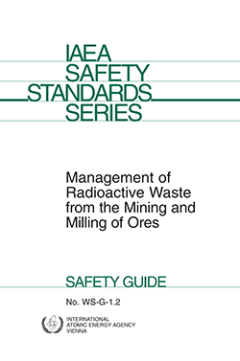
Management of Radioactive Waste from the Mining and Milling of Ores, Safety G…
This Safety Guide provides recommendations and guidance on the safe management of radioactive waste resulting from the mining and milling of ores, with the purpose of protecting workers, the public and the environment from the consequences of these activities. It supplements Safety Standards Series No. WS-R-1, Near Surface Disposal of Radioactive Waste.
- Edisi
- -
- ISBN/ISSN
- 9201158025 / 1020525X
- Deskripsi Fisik
- 39 p. : Illus. ; 24 cm
- Judul Seri
- Safety Standards Series No. WS-G-1.2
- No. Panggil
- -
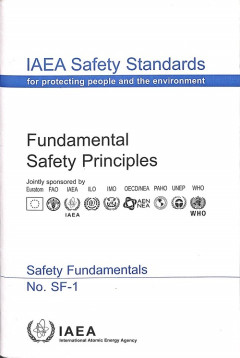
Fundamental Safety Principles, Safety Fundamentals
This publication states the fundamental safety objective and ten associated safety principles, and briefly describes their intent and purpose. The fundamental safety objective — to protect people and the environment from harmful effects of ionizing radiation — applies to all circumstances that give rise to radiation risks. The safety principles are applicable, as relevant, throughout the en…
- Edisi
- -
- ISBN/ISSN
- 9201107064 / 1020525X
- Deskripsi Fisik
- 21 p. : Illus. ; 24 cm
- Judul Seri
- Safety Standards Series No. SF-1
- No. Panggil
- -
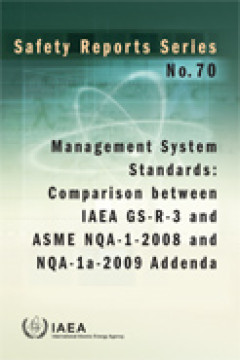
MANAGEMENT SYSTEM STANDARDS: COMPARISON BETWEEN IAEA GS-R-3 AND ASME NQA-1-20…
This Safety Report compares the requirements of IAEA Safety Standards Series No. GS-R-3, The Management System for Facilities and Activities, and the American Society of Mechanical Engineers (ASME) Quality Assurance Requirements for Nuclear Facility Applications (ASME NQA-1-2008, NQA-1a-2009). It identifies the similarities and differences between them and provides information and guidance to a…
- Edisi
- -
- ISBN/ISSN
- 9789201208101
- Deskripsi Fisik
- 76 pages, 24 cm
- Judul Seri
- Safety Reports Series 70
- No. Panggil
- -
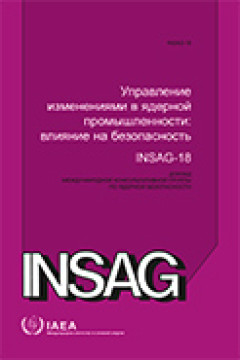
Managing Change in the Nuclear Industry: The Effects on Safety
This INSAG report is written for members of boards of directors and senior executives who are responsible for the overall safety of an installation, who make decisions for change, and who implement those decisions. It is also written for senior regulators who, on behalf of the public, ensure that boards of directors and executives meet their responsibilities for safety. The report discusses how…
- Edisi
- -
- ISBN/ISSN
- 9201134037 / 10252169
- Deskripsi Fisik
- 12 p. : Illus. ; 24 cm
- Judul Seri
- INSAG-18
- No. Panggil
- -
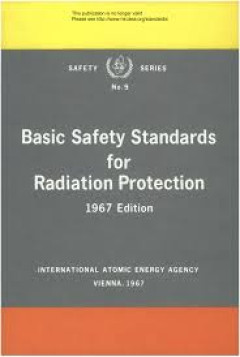
The Use of Film Badges for Personnel Monitoring
This book consist of chapter I. Introduction; 2. The Photographic Process, a review of terms and concepts; 3. Application of the photocraphic technique to personnel monitoring; 4. Requirements for setting up a photographic personnel monitoring service; and 5. Examples of photographic personnel monitoring procedure. (Jml)
- Edisi
- -
- ISBN/ISSN
- -
- Deskripsi Fisik
- 87 p. : Illus. ; 21 cm
- Judul Seri
- Safety Series No. 8
- No. Panggil
- -

Environmental Impact Assessment of Recycled Wastes on Surface and Ground Wate…
The state of the art of the impact assessment of recycled hazardous waste materials on surface and ground waters is presented. The topics include chemodynamics, toxicology, modeling and information systems. Due to the wealth of information on this topic, the texts of T. Kassim (ed.): Environmental Impact Assessment of Recycled Wastes on Surface and Ground Waters are published in three separa…
- Edisi
- Volume 2
- ISBN/ISSN
- 9783540235876 / 14336863
- Deskripsi Fisik
- xvii, 283 p. : Illus. ; 24 cm
- Judul Seri
- -
- No. Panggil
- 551 KAS e
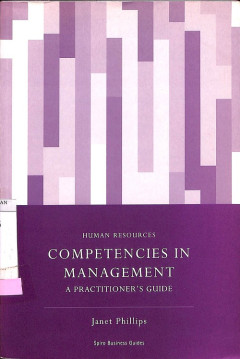
Competencies in Management: A practitioners Guide
This book explains what competences are and how they help optimize the performance of different organizations, cultures and countries.
- Edisi
- -
- ISBN/ISSN
- 1904298869
- Deskripsi Fisik
- xx, 240 p. : Illus. ; 21 cm
- Judul Seri
- -
- No. Panggil
- 658.3 PHI h
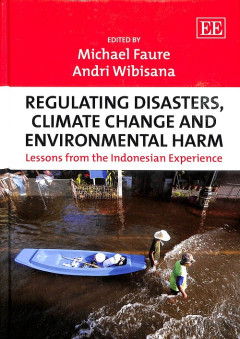
Regulating Disasters, Climate Change and Environmental Harm: Lessons from the…
This book provides a compelling view of the emerging system of environmental law in Indonesia, the world's fourth most populous country and one of its most rapidly developing. Whilst Indonesia owes its legal traditions to Dutch civil law, a vibrant community of Indonesian environmental law scholars, many of whom are represented in this volume, has helped forge distinctive approaches to environm…
- Edisi
- -
- ISBN/ISSN
- 9781781002483
- Deskripsi Fisik
- 498 p. : illus. ; 24 cm
- Judul Seri
- -
- No. Panggil
- 551 FAU r
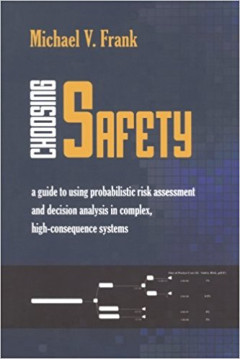
Choosing Safety: A Guide to Using Probabilistic Risk Assessment and Decision …
The technological age has seen a range of catastrophic and preventable failures, often as a result of decisions that did not appropriately consider safety as a factor in design and engineering. Through more than a dozen practical examples from the author‘s experience in nuclear power, aerospace, and other potentially hazardous facilities, Choosing Safety is the first book to bring together pr…
- Edisi
- 1
- ISBN/ISSN
- 9781933115542
- Deskripsi Fisik
- 231 p. : Illus. ; cm
- Judul Seri
- -
- No. Panggil
- 658.4 FRA c
 Karya Umum
Karya Umum  Filsafat
Filsafat  Agama
Agama  Ilmu-ilmu Sosial
Ilmu-ilmu Sosial  Bahasa
Bahasa  Ilmu-ilmu Murni
Ilmu-ilmu Murni  Ilmu-ilmu Terapan
Ilmu-ilmu Terapan  Kesenian, Hiburan, dan Olahraga
Kesenian, Hiburan, dan Olahraga  Kesusastraan
Kesusastraan  Geografi dan Sejarah
Geografi dan Sejarah